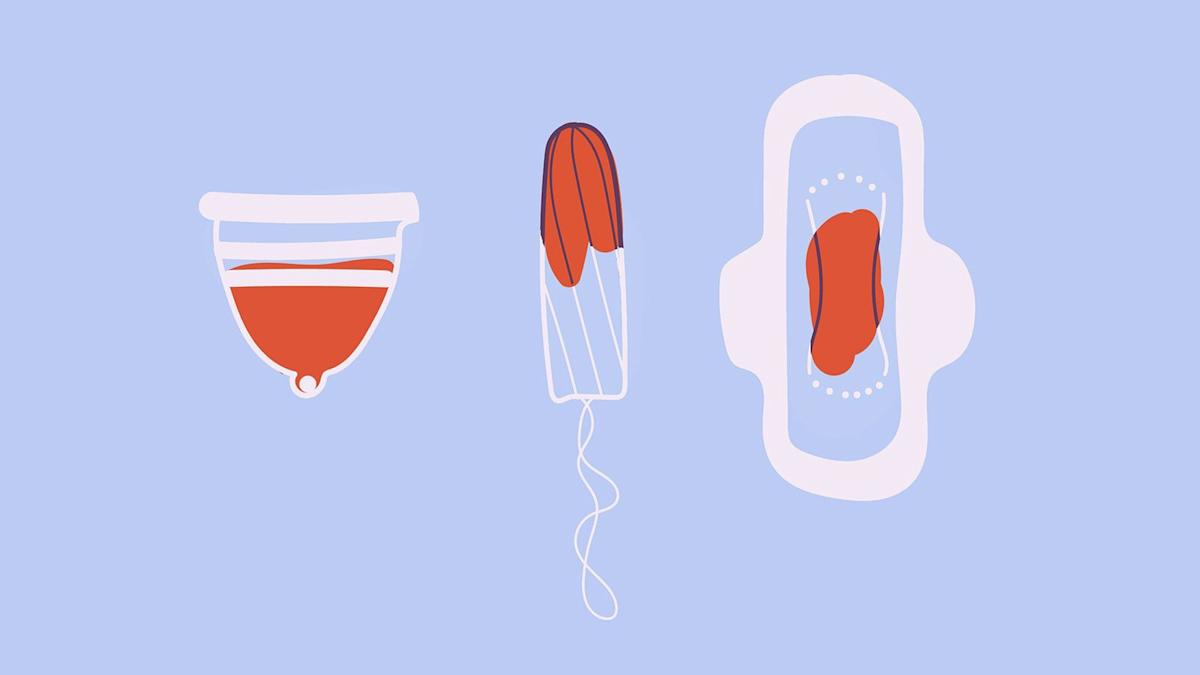How to have a sustainable period
You probably do your bit to reduce plastic waste by using a reusable coffee cup or taking your tote bag to the supermarket. But have you thought about how reusable products could make your period more eco-friendly?

Every girl, woman and person who menstruates will use around 11,000 period products and applicators in their lifetime. It’s estimated that this creates 28,114 tonnes of waste per year in the UK.
These pads, tampons and applicators often contain plastics and other synthetic materials, so they never really go away. Once we discard it, this waste can end up in a landfill for years, or be burnt in an incinerator - which can add to deforestation and air pollution.
So what can we do instead? Luckily there’s a huge variety of greener options available now. From reusable cups and pads to biodegradable tampons, there’s a sustainable option for every period. We look at the pros and cons,
Menstrual cups
These handy little cups are made of soft silicon. They use gentle suction to stay inside your vagina. And they collect your blood, rather than absorbing it.
There’s a huge range of sizes, shapes and colours available, so you can find one that works for your body and feels comfortable. One cup can be used for up to 10 years, which works out to about 120 monthly bleeds. And you can wear them for 12 hours, so you do not need to change them as often as pads or tampons.
Pros:
Can wear them for hours without worrying
1 cup can be used for years, so they're very cost-effective
Good protection against leaks and odours
Cons:
Emptying and cleaning the cup can be messy
Need some practice to make inserting and removing easy
Reusable pads
Reusable pads are sanitary pads made from soft fabrics, like bamboo or cotton. They often have poppers so you can fix them in place. The layers of fabric inside each pad absorb your period. Then when you need to, they can be washed and used again. Soaking in cold water before you wash them will make sure there are no stains.
Washable pads made from fabric are one of the oldest forms of menstrual product, historical evidence shows they've been around since the 10th century. Modern reusable pads come in all kinds of different patterns and colours. If you’re feeling crafty, you can even make your own.
Pros:
Soft and comfortable
Easy to use
Totally body-safe and hygienic
Cons:
Less convenient - you'll need somewhere to put used pads when you change them
Cleaning and washing them can be a hassle
Period pants
They look and feel just like regular underwear, but period pants have built-in absorbent pads so you don’t need to wear anything extra during your bleed. They used to be pretty niche, and pretty costly, but you can now pick them up in high-street stores and they’re much more affordable.
Leakproof, comfortable and hygienic, period pants are washable and reusable. And available in tonnes of styles.
Pros:
Discreet and comfortable
Gender affirming styles available for trans men and non binary people who menstruate
Great for lighter days or unpredictable periods
Cons:
Tricky to change them throughout the day
More expensive than other options, especially if you want a few pairs
Eco-friendly options
If going reusable isn’t for you, eco-friendly makers are creating a greener take on traditional pads and tampons. Look out for biodegradable, plastic-free versions. They’re often made of organic cotton or bamboo. With applicators and packaging made from innovative plant-based materials.
You can use them in the same way as a regular period product. But they have less impact on the planet once you throw them away.
Pros:
Familiar and convenient
Non-toxic
Cons:
Single-use and disposable
Looking for something more?
Since 2014, SH:24 has been making it easier to manage your sexual health with our free, online services. All delivered in partnership with the NHS.
All our information and articles are written by the SH:24 team and reviewed by medical experts.
Learn what symptoms to look out for, where to get tested and how to keep yourself safe from STIs.
From pills to patches, check out our guide to 14 different methods of birth control.




